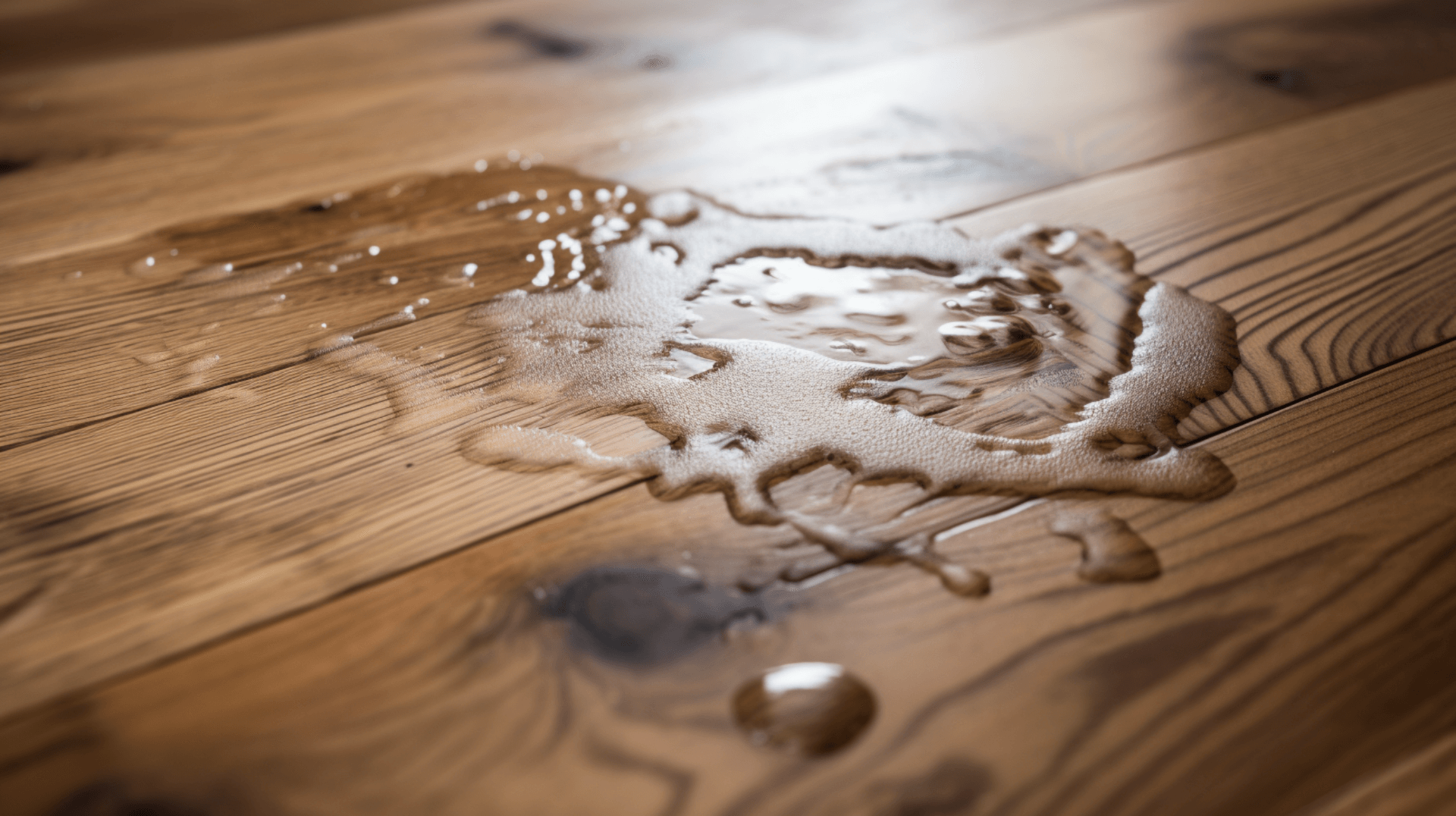Understanding the Importance of Protecting Wooden Floors from Water Damage
Wooden floors are a popular choice for home and business owners due to their beauty and durability. if not properly protected, wooden floors can be susceptible to water damage. Water damage can cause a variety of issues, from warping and discoloration to mold and mildew growth. It is therefore important for home and business owners to understand the importance of protecting their wooden floors from water damage.
Water damage occurs when water seeps into the wood, causing it to swell and warp. This can lead to cracks, gaps, and other structural damage. In addition, water can cause discoloration and staining, making the floor look dull and unattractive. If left untreated, water damage can also lead to the growth of mold and mildew, which can cause health problems and further damage to the floor.
To protect wooden floors from water damage, it is important to take preventive measures. This includes sealing the floor with a water-resistant sealant, such as polyurethane or wax. These sealants create a protective barrier that prevents water from penetrating the wood. It is also important to use rugs and mats in areas prone to moisture, such as entryways and kitchens, to absorb any water and prevent it from reaching the floor.
Regular cleaning and maintenance are also crucial for preventing water damage. This includes promptly cleaning up any spills or standing water on the floor and ensuring that the floor is thoroughly dried. It is also important to inspect the floor regularly for signs of water damage, such as warping, discoloration, or mold growth, and take action to repair any existing damage.
By understanding the importance of protecting wooden floors from water damage and taking preventive measures, home and business owners can ensure the longevity and beauty of their floors for years to come.
Identifying the Causes of Water Damage to Wooden Floors
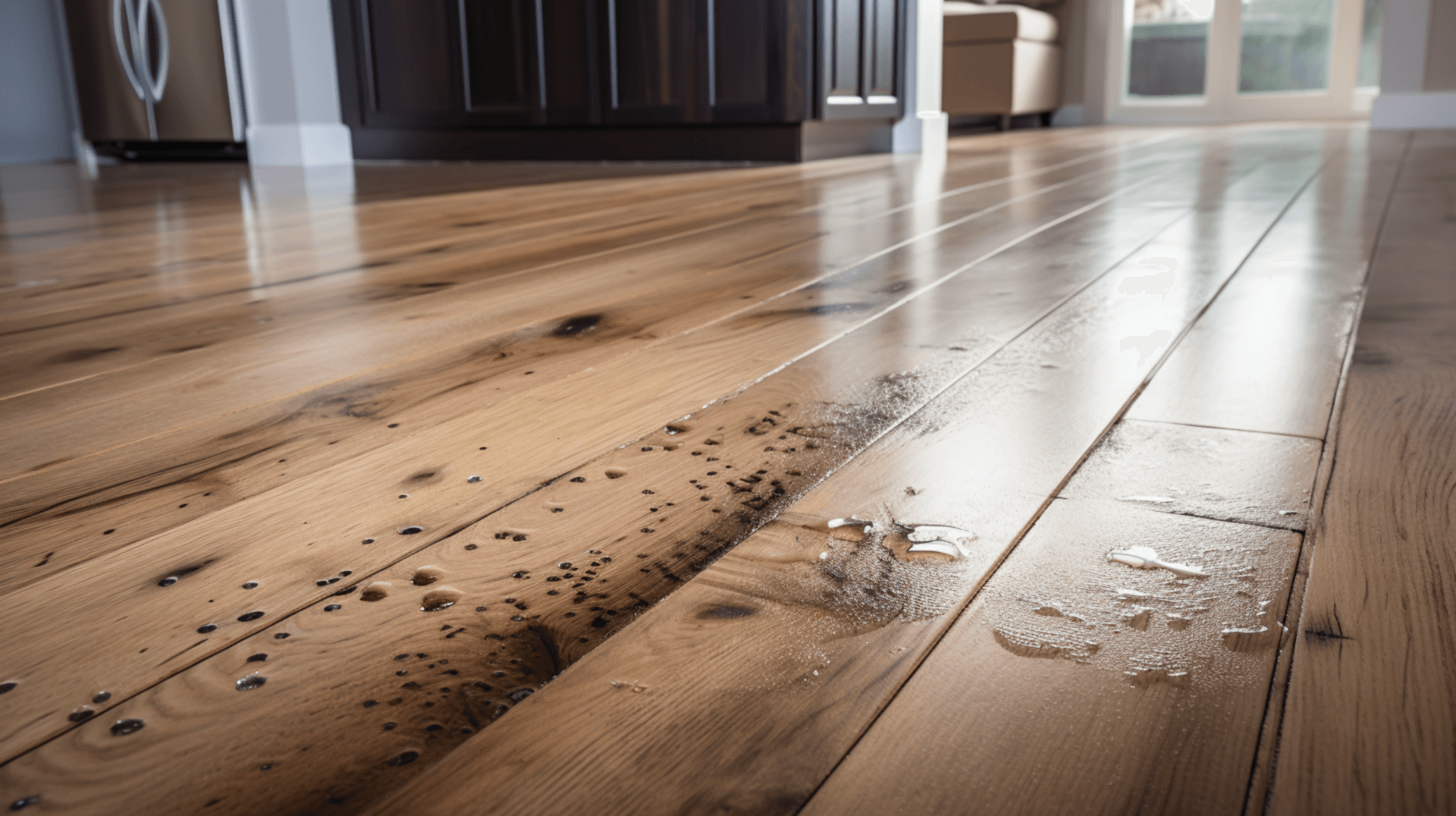
Water damage is one of the most common causes of damage to wooden floors. It can occur due to a variety of sources, including plumbing issues, weather conditions, and improper maintenance. Understanding the causes of water damage can help home and business owners take the necessary steps to protect their floors.
Common sources of water damage in homes and businesses include plumbing leaks, flooding, and condensation. Plumbing leaks can occur due to faulty pipes, fixtures, or appliances, while flooding can be caused by heavy rains or overflowing rivers. Condensation can occur when warm, humid air comes into contact with cold surfaces, such as windows or walls.
Plumbing issues, weather conditions, and improper maintenance can all lead to water damage. Plumbing leaks can cause water to seep into the wood, leading to warping and discoloration. Flooding can cause the wood to swell and warp, and if not properly dried, can lead to mold and mildew growth. Improper maintenance, such as not cleaning up spills or standing water, can also lead to water damage.
Humidity also plays an important role in causing water damage to wooden floors. High levels of humidity can cause the wood to absorb moisture, leading to warping and discoloration. Low levels of humidity can cause the wood to dry out and shrink, leading to cracks and gaps. It is important to maintain a balanced humidity level in the home or business to prevent water damage to wooden floors.
To protect wooden floors from water damage, it is important to address any plumbing issues promptly, ensure proper drainage around the property, and maintain a comfortable humidity level. Regular cleaning and maintenance, such as promptly cleaning up spills and standing water, can also help prevent water damage. Additionally, using rugs or mats in high-traffic or moisture-prone areas can provide an extra layer of protection for the wooden floors.
By understanding the common sources of water damage and taking preventive measures, home and business owners can protect their wooden floors and ensure their longevity and beauty for years to come.
Recognizing the Signs of Water Damage on Wooden Floors
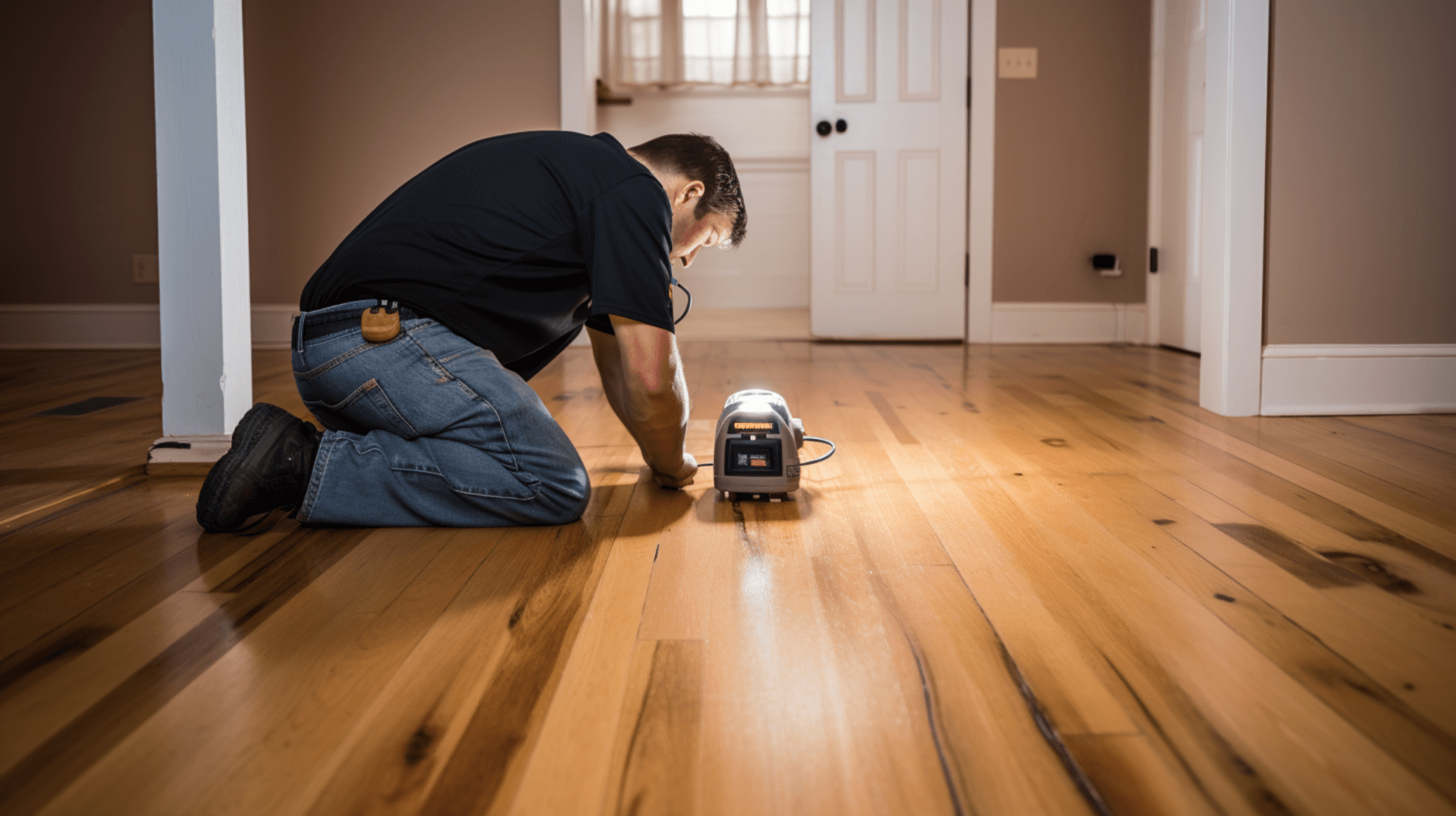
Recognizing the Signs of Water Damage on Wooden Floors
Visible signs of water damage on wooden floors include changes in texture, color, and shape. Warping, cupping, and buckling of the wood are indications that the wood has absorbed too much moisture and is beginning to swell. Discoloration, such as dark spots or streaks, can also be a sign of water damage. These visible signs are often the first indicators that there is water damage present.
Changes in the texture, color, and shape of wooden floors can indicate water damage. Warping occurs when the wood absorbs moisture and swells, causing it to bend or curve. Cupping is when the edges of the wood are higher than the center, creating a concave shape. Buckling is when the wood lifts off the subfloor, creating a raised area. These changes in texture, color, and shape are clear signs that water has seeped into the wood and caused it to swell.
Less obvious signs of water damage may require professional inspection. These include the presence of mold or mildew, which can be caused by water seeping into the wood and creating a damp environment. Mold and mildew can often be detected by a musty smell. Soft spots in the wood can also indicate water damage, as the wood has absorbed too much moisture and has become weakened.
It is important for home and business owners to be aware of these signs of water damage on wooden floors. Promptly addressing any issues can help prevent further damage and costly repairs. Regular cleaning and maintenance, such as promptly cleaning up spills and standing water, can also help prevent water damage.
Evaluating the Extent of Water Damage to Wooden Floors
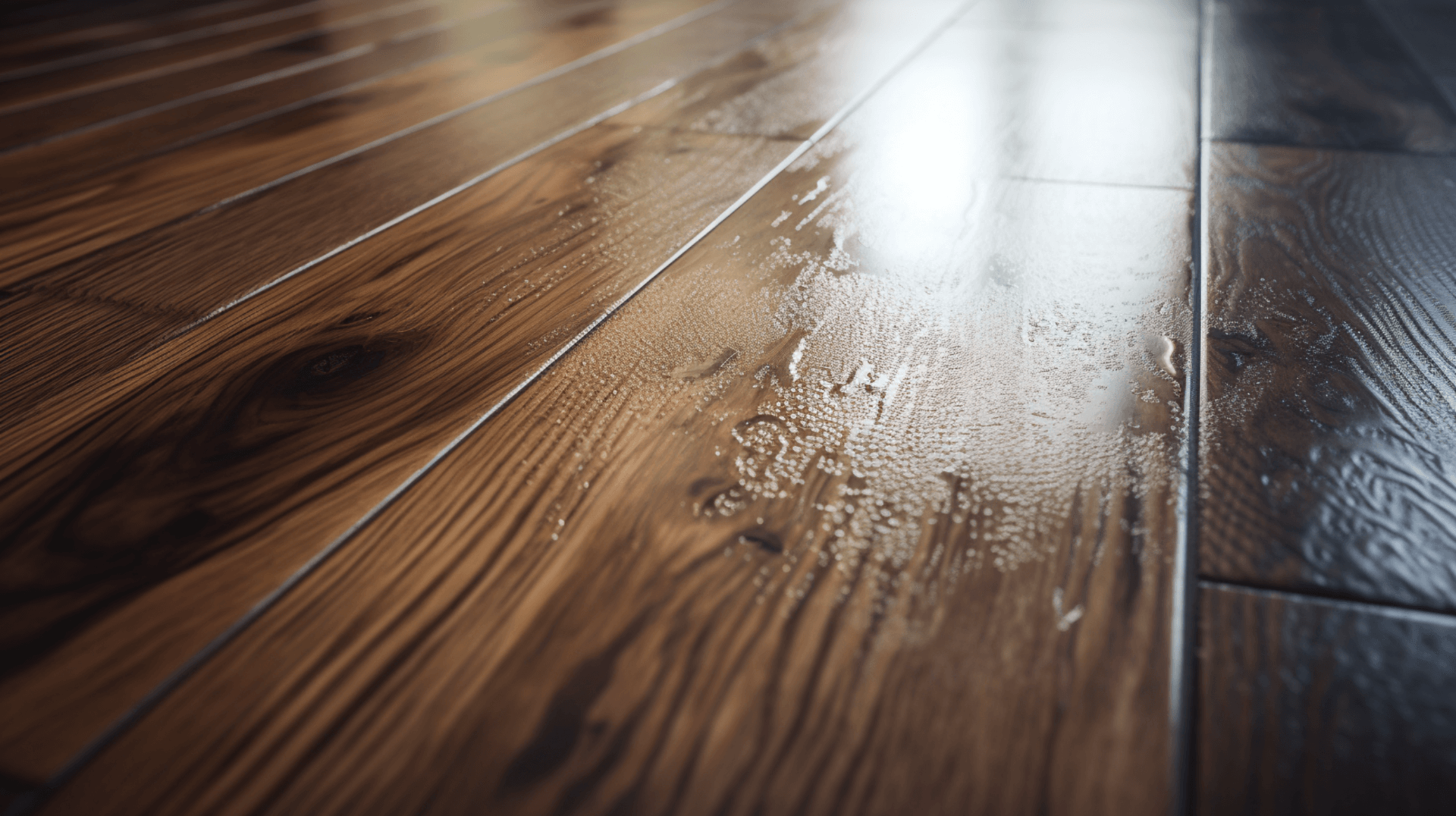
Assessing the severity of water damage to wooden floors can be a difficult task. It is important to consider the extent of the damage, the type of wood, and the age of the floor when determining the best course of action. Factors such as the amount of water absorbed, the length of time the water was present, and the type of finish on the floor can all affect the extent of the damage. Additionally, it is important to inspect the floor externally in relation to the internal finished floor level to ensure that the sub-floor ventilation is effective and unobstructed by any new materials, debris, or other detritus material. Raised external ground levels should be carefully reduced to restore full cross-flow, or the use of telescope vents may provide a technical solution to maintaining the required ventilation.
When deciding between repairing and replacing water-damaged wooden floors, it is important to consider the cost of repair versus the cost of replacement. If the damage is extensive and the cost of repair is more than the cost of replacement, then it may be more cost-effective to replace the floor. if the damage is minor and the cost of repair is less than the cost of replacement, then it may be more cost-effective to repair the floor.
Professional services like GJP Floor Sanding can be invaluable in evaluating water damage. Our experienced team can inspect the floor, assess the extent of the damage, and provide expert advice on the best course of action. We can also provide professional repair or replacement services to ensure the floor is restored to its original condition.
Implementing Preventive Measures to Protect Wooden Floors from Water Damage

Implementing Preventive Measures to Protect Wooden Floors from Water Damage
To prevent water damage to wooden floors, there are several best practices that home and business owners can follow. Regular maintenance and proper cleaning are key to preventing water damage. Promptly cleaning up spills or standing water on the floor and ensuring that the floor is thoroughly dried can help prevent the wood from absorbing moisture and swelling. It is also important to inspect the floor regularly for signs of water damage, such as warping, discoloration, or mold growth, and take action to repair any existing damage.
Using rugs or mats in high-traffic or moisture-prone areas can provide an extra layer of protection for the wooden floors. These rugs and mats can absorb any water and prevent it from reaching the floor. Additionally, sealing the floor with a water-resistant sealant, such as polyurethane or wax, can create a protective barrier that prevents water from penetrating the wood.
When it comes to products and tools for protecting wooden floors from water damage, it is important to use high-quality materials and tools. Water-resistant sealants, such as polyurethane or wax, should be specifically designed for wooden floors and applied according to the manufacturer’s instructions. Moisture meters can also be used to measure the moisture content of the wood and ensure that it is within the recommended range.
By following these preventive measures and using the recommended products and tools, home and business owners can protect their wooden floors from water damage and ensure their longevity and beauty for years to come.
Exploring the Role of Proper Installation in Preventing Water Damage

Proper installation of wooden floors is essential for preventing water damage. It is important to use the correct materials and techniques to ensure the floor is properly installed and water-resistant. One effective technique is the use of a moisture barrier, which is placed between the subfloor and the wooden floor to prevent water from seeping into the wood. Additionally, using a sealant on the floor can create a protective barrier that prevents water penetration.
Inspecting the floor for any metal supports or electrical fittings in the floor void is crucial, as corrosion or structural fatigue can increase the risk of water damage. These should be properly covered during installation to prevent any potential issues. Appliances that use combustion should also be assessed to ensure adequate ventilation is provided.
Professional installation services like GJP Floor Sanding can ensure the longevity of wooden floors. Our experienced team can inspect the floor, assess the extent of the damage, and provide expert advice on the best course of action. We can also provide professional installation services to ensure the floor is properly installed and water-resistant.
Understanding the Process of Repairing WaterDamaged Wooden Floors
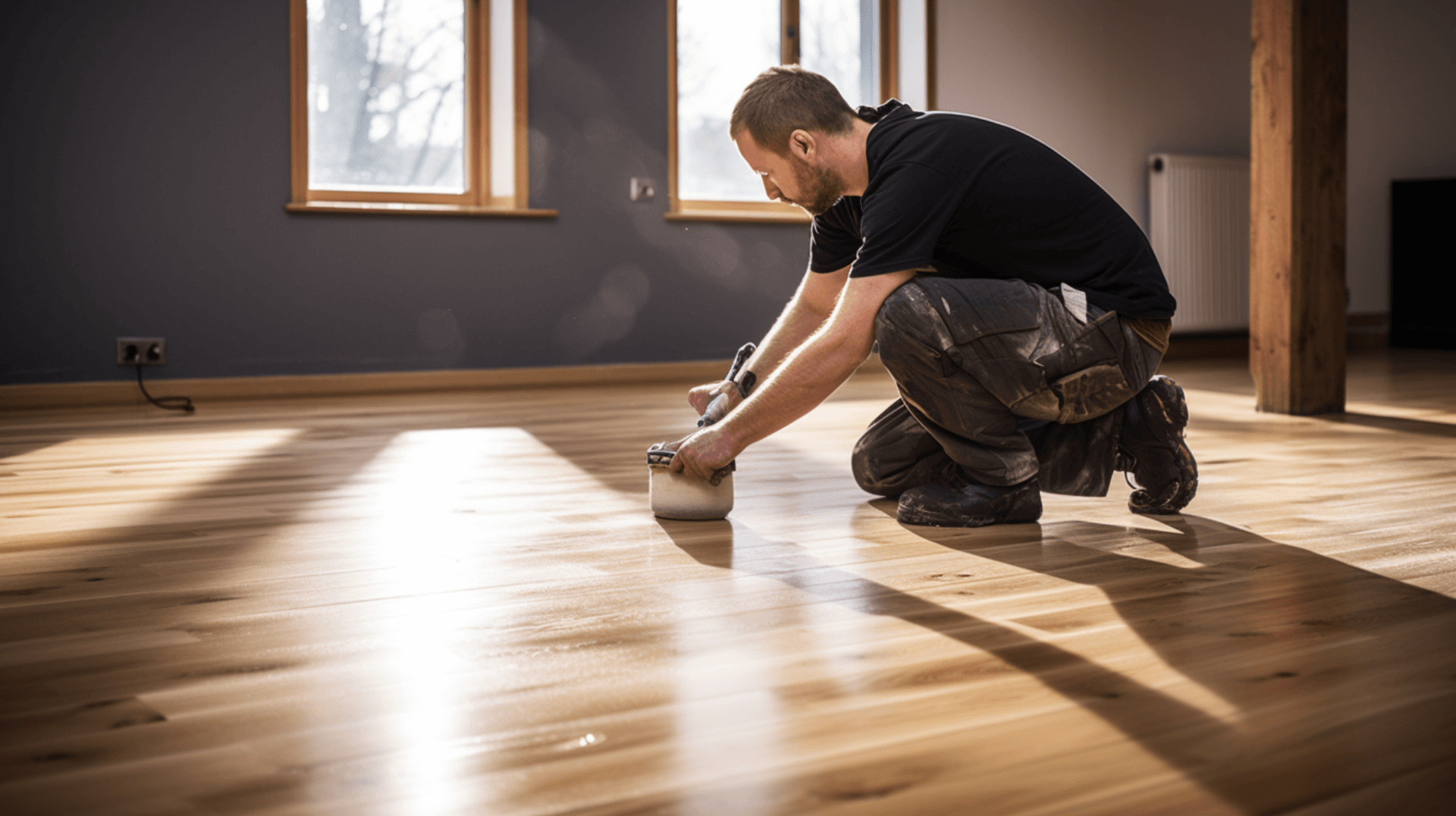
Repairing water-damaged wooden floors can be a complex process, but with the right tools and materials, it can be done effectively and efficiently. The first step is to assess the extent of the damage and determine the best course of action. If the damage is minor, then repairs may be possible. If the damage is extensive, then replacement may be the best option.
Before beginning repairs, it is important to inspect the floor for any metal supports or electrical fittings in the floor void, as corrosion or structural fatigue can increase the risk of water damage. Additionally, any water or condensate pipes in the sub-floor void should be considered in the design or installation of insulation, as leaving the pipes exposed to the colder void environment can increase the risk of freezing.
Once the extent of the damage has been determined, the next step is to prepare the floor for repairs. This includes removing any furniture, rugs, or other items from the floor, as well as any existing finishes or sealants. The floor should then be thoroughly cleaned and dried to remove any dirt, dust, or debris.
The tools and materials required for repairing water damage depend on the extent of the damage and the type of wood. Common tools include a hammer and chisel or circular saw for removing damaged wood, a vacuum cleaner for removing excess water or moisture, a sander for smoothing out imperfections, and wood filler for filling in gaps or cracks. It is important to use high-quality materials and tools specifically designed for wooden floors to ensure a successful repair.
Professional services like GJP Floor Sanding can ensure effective and efficient repairs. Our experienced team has the necessary tools, materials, and expertise to carry out the repairs to a high standard. We can assess the extent of the damage, provide expert advice on the best course of action, and perform the necessary repairs to restore the water-damaged wooden floors to our original condition.
Learning About the Sanding Process for WaterDamaged Wooden Floors
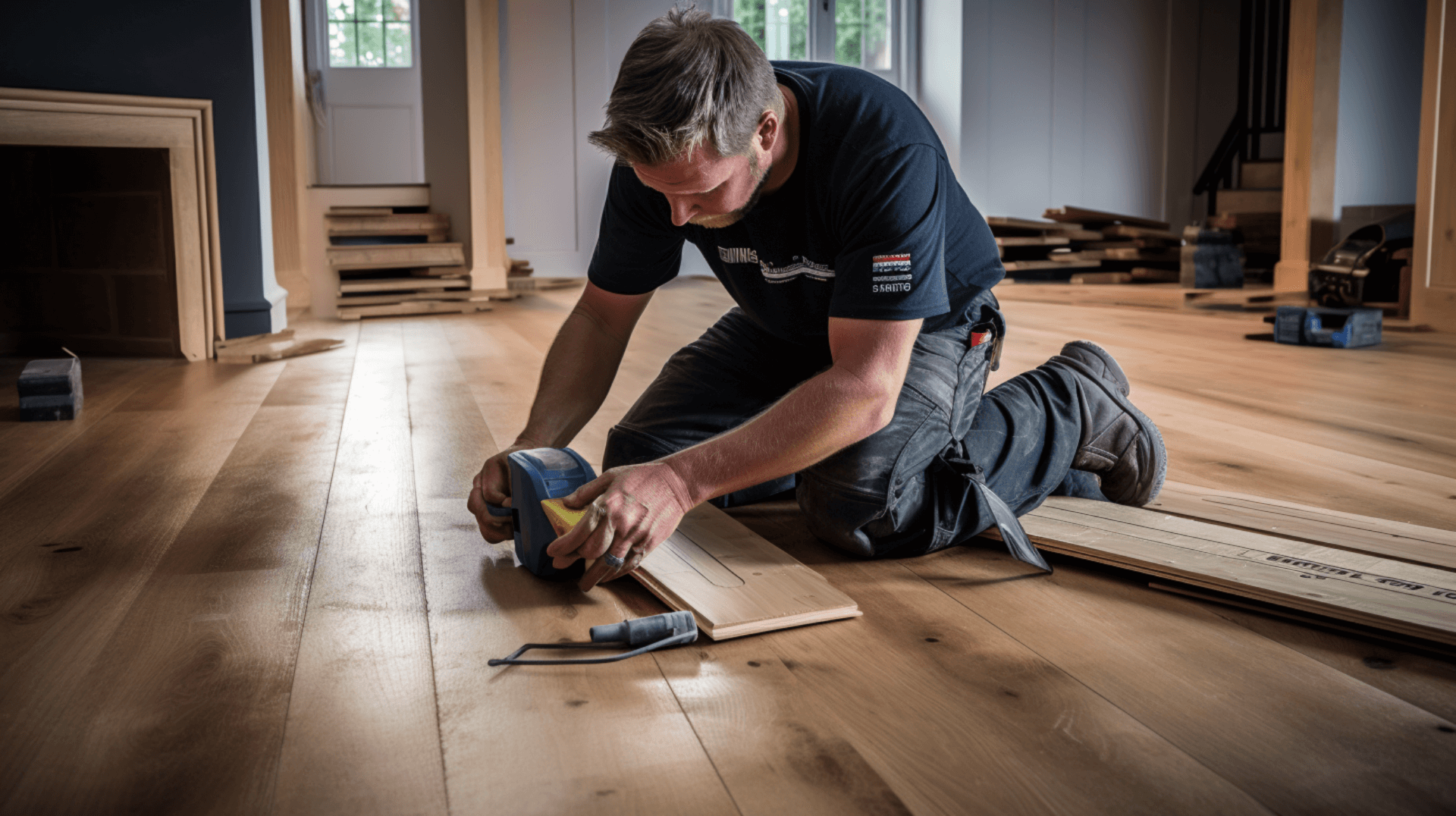
Sanding is an important part of the process of repairing water-damaged wooden floors. It is used to remove any existing finishes or sealants, as well as any damaged or warped wood. The sanding process also helps to smooth out any imperfections and create a level surface for the new finish or sealant.
The sanding process typically involves using a sander to remove the existing finish or sealant, followed by a finer grade of sandpaper to smooth out any imperfections. The sanding process can be done by hand or with a machine, depending on the size of the area and the extent of the damage. The benefits of sanding include removing any existing damage, creating a level surface, and preparing the floor for a new finish or sealant.
Before beginning the sanding process, it is important to inspect the floor for any metal supports or electrical fittings in the floor void, as corrosion or structural fatigue can increase the risk of water damage. Additionally, any water or condensate pipes in the sub-floor void should be considered in the design or installation of insulation, as leaving the pipes exposed to the colder void environment can increase the risk of freezing.
Professional sanding services like GJP Floor Sanding can provide the expertise and equipment needed to carry out the sanding process effectively. Our experienced team can assess the extent of the damage, determine the appropriate sanding techniques, and ensure that the floor is properly sanded and prepared for the new finish or sealant. Professional services can save time and effort while ensuring the best results for water-damaged wooden floors.
Discovering the Importance of Finishing and Sealing in Protecting Wooden Floors
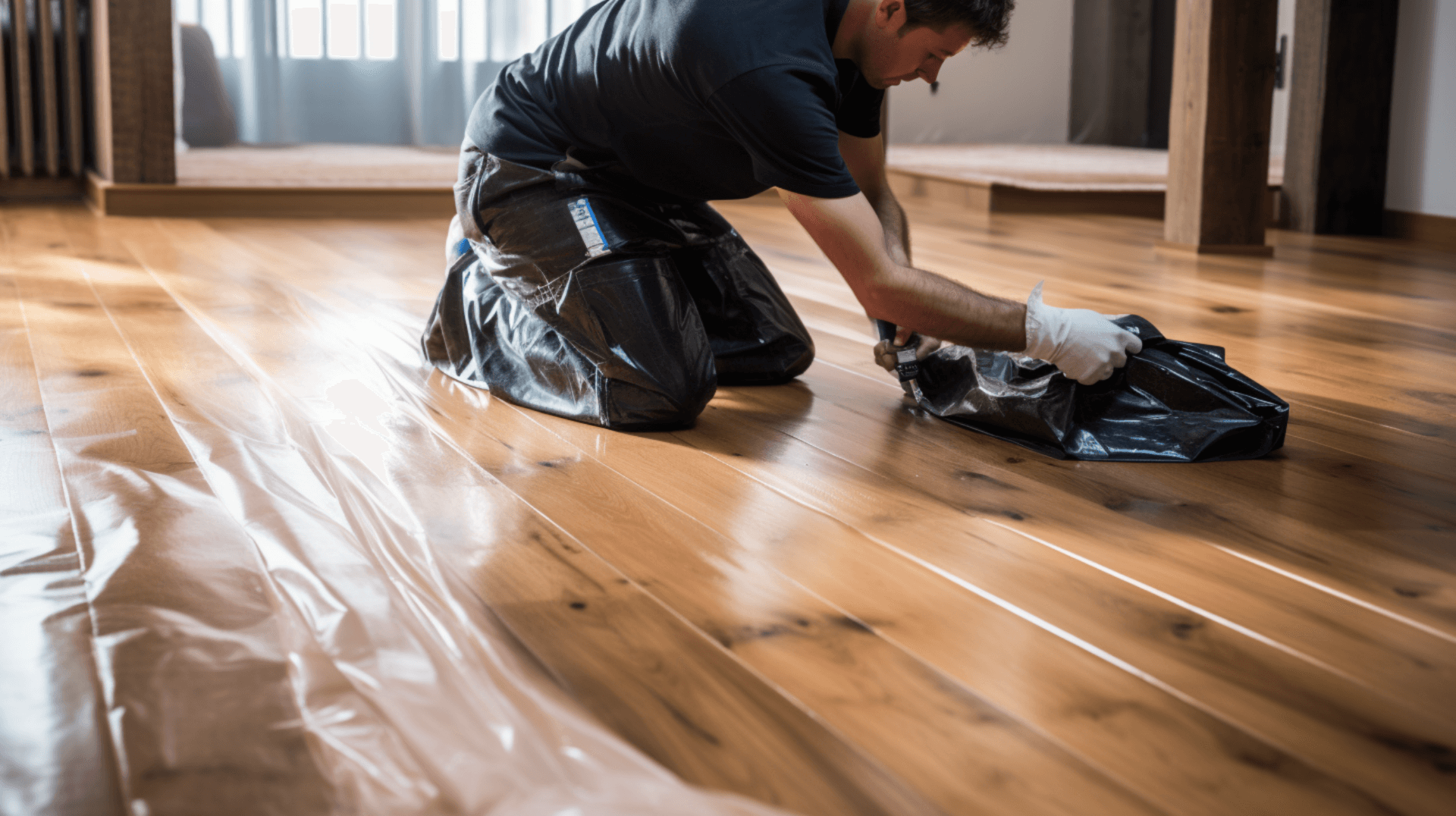
Finishing and sealing are essential for protecting wooden floors from water damage. These processes create a protective barrier that prevents water from penetrating the wood, preserving its integrity and preventing warping, swelling, or rotting. Additionally, finishes and sealants provide a decorative finish, enhancing the appearance of the wooden floors.
There are various types of finishes and sealants available for wooden floors. Polyurethane finishes are a popular choice due to their durability and water resistance. They come in both water-based and oil-based varieties, with the water-based option being the most popular. Wax finishes are another common choice as they provide a natural finish and are easy to apply. Oil-based finishes are also available, but they are not as durable or water-resistant as polyurethane or wax.
Professional services like GJP Floor Sanding can be invaluable in choosing and applying the right finish and sealant for wooden floors. Our experienced team can assess the floor, evaluate the extent of the damage, and provide expert advice on the best type of finish and sealant for the floor. We can also provide professional installation services to ensure the finish and sealant are applied correctly and effectively.
By utilizing professional services, home and business owners can ensure that our wooden floors are properly finished and sealed, providing long-lasting protection against water damage while enhancing the overall aesthetic appeal of the space.
Maintaining Wooden Floors PostRepair to Prevent Future Water Damage
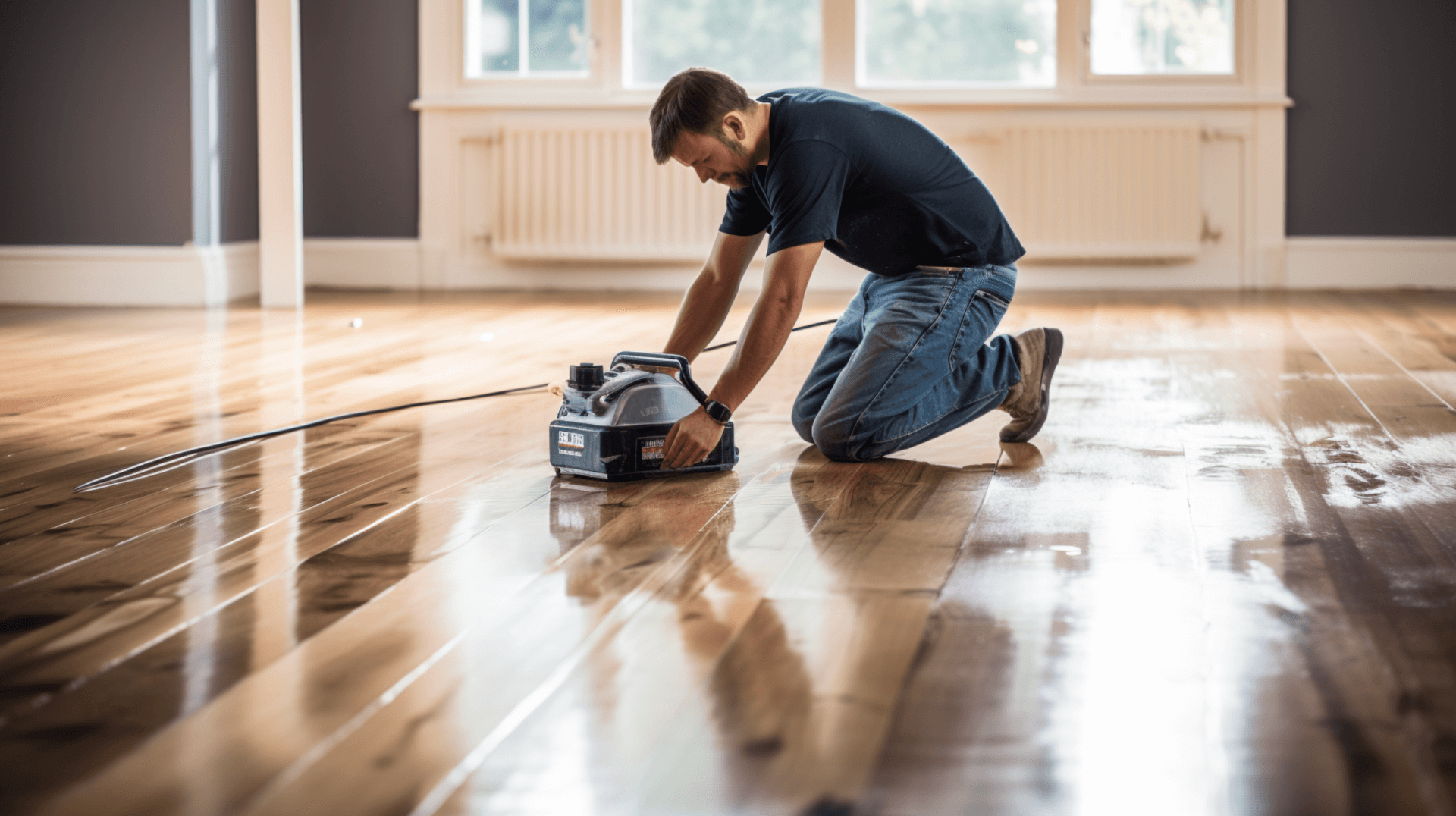
Maintaining wooden floors post-repair is essential for preventing future water damage. Regular inspections and maintenance can help detect any potential issues early on and prevent further damage. Home and business owners should inspect the floor regularly for signs of water damage, such as warping, discoloration, or mold growth, and take action to repair any existing damage.
Using rugs or mats in high-traffic or moisture-prone areas can provide an extra layer of protection for the wooden floors. These rugs and mats can absorb any water and prevent it from reaching the floor. Additionally, sealing the floor with a water-resistant sealant, such as polyurethane or wax, can create a protective barrier that prevents water from penetrating the wood.
To achieve the required U-value, it is important to use materials that are appropriately certified for use as insulation under timber floors. It is important to check the manufacturer’s technical information to ensure the material is suitable for use as UFI, or refer to the current version of BR443 conventions for calculating U-values.
Having a professional maintenance plan with services like GJP Floor Sanding can be beneficial for maintaining wooden floors. Our experienced team can provide regular inspections, assess the extent of any damage, and offer expert advice on maintenance and repairs. This ensures that wooden floors remain in good condition and any potential issues are addressed quickly.
Insights from GJP Floor Sanding Experts on Protecting Wooden Floors
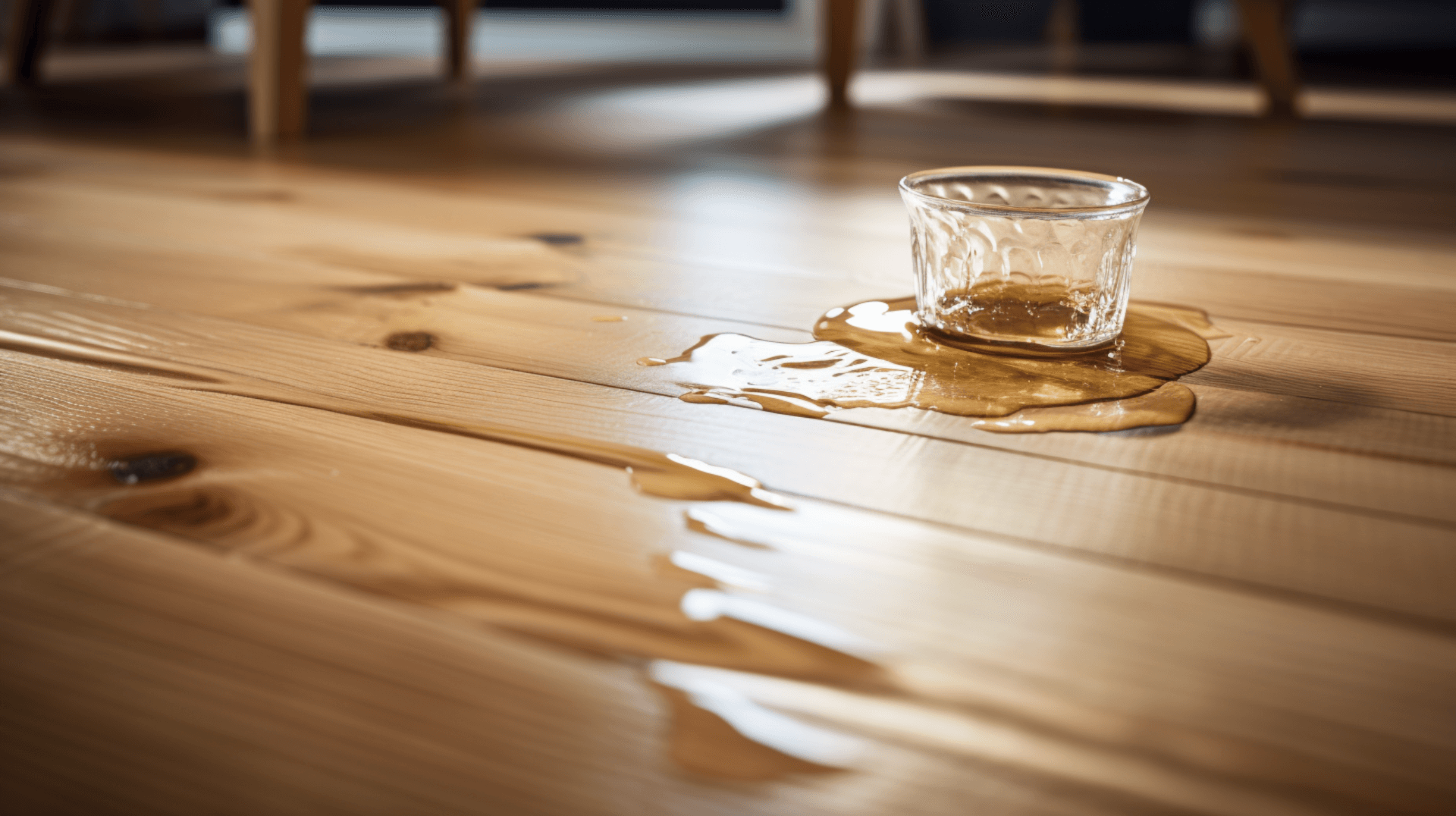
GJP Floor Sanding is a professional floor sanding and restoration service with over 25 years of experience in the industry. Our team of experts can provide expert advice and solutions for protecting and repairing water-damaged wooden floors.
One of the most important tips from GJP Floor Sanding is to inspect the floor for any metal supports or electrical fittings in the floor void, as corrosion or structural fatigue can increase the risk of water damage. Additionally, any water or condensate pipes in the sub-floor void should be considered in the design or installation of insulation, as leaving the pipes exposed to the colder void environment can increase the risk of freezing. To achieve the required U-value, it is important to use materials that are appropriately certified for use as insulation under timber floors. It is important to check the manufacturer’s technical information to ensure the material is suitable for use as UFI, or refer to the current version of BR443 conventions for calculating U-values.
GJP Floor Sanding’s expertise and experience can benefit home and business owners in a number of ways. Our team can assess the extent of the damage, provide expert advice on the best course of action, and perform the necessary repairs to restore the water-damaged wooden floors to our original condition. We can also provide professional installation services to ensure the floor is properly installed and water-resistant.
In addition to our expertise in preventing and repairing water damage, GJP Floor Sanding offers unique solutions for water-damaged wooden floors. We have a range of moisture-resistant finishes and sealants that can provide an extra layer of protection for wooden floors. These finishes and sealants are designed to repel water and prevent it from seeping into the wood, ensuring the longevity and durability of the floors.
Overall, GJP Floor Sanding’s expertise and experience can help home and business owners protect and repair our water-damaged wooden floors. Our range of services, including inspections, repairs, and installation, combined with our unique solutions, make us a valuable resource for maintaining and preserving wooden floors.
Contact GJP Floor Sanding for Professional Help with WaterDamaged Wooden Floors
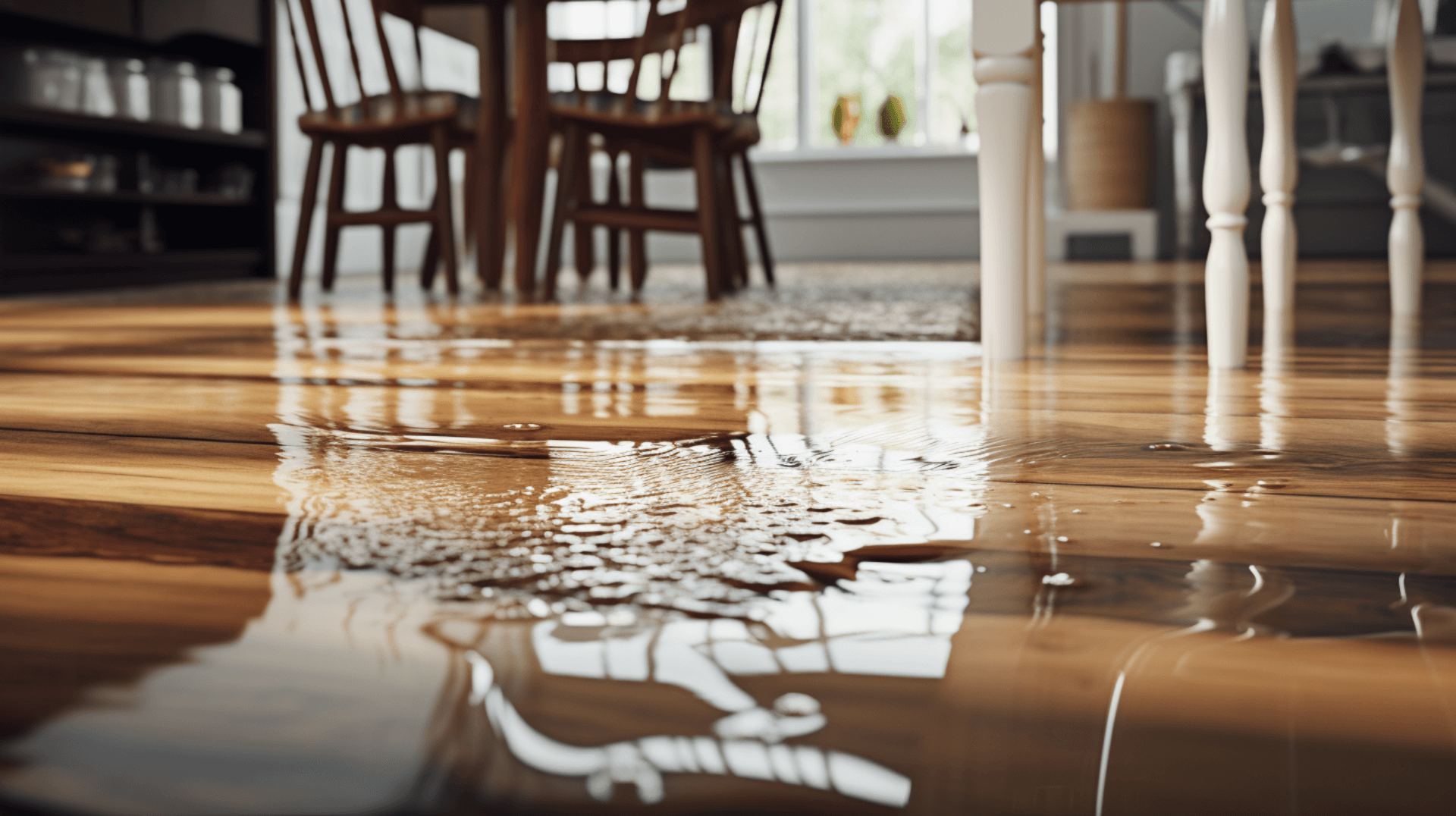
GJP Floor Sanding is a professional floor sanding and restoration service with over 25 years of experience in the industry. Home and business owners can get in touch with GJP Floor Sanding for professional help with water-damaged wooden floors by visiting our website or calling our customer service team.
GJP Floor Sanding offers a range of services for water-damaged wooden floors, including inspections, repairs, sanding, finishing, and sealing. Our experienced team can assess the extent of the damage, determine the appropriate sanding techniques, and ensure that the floor is properly sanded and prepared for the new finish or sealant. We can also provide professional installation services to ensure the finish and sealant are applied correctly and effectively.
In addition to our expertise in repairing water-damaged wooden floors, GJP Floor Sanding also offers a range of moisture-resistant finishes and sealants that can provide an extra layer of protection. We can provide advice on the target moisture content for the geographic area and the facility, as well as the use of airflow, heat, and dehumidifiers to dry out the flooring and adhesive materials.
Choosing GJP Floor Sanding for protecting your wooden floors from water damage offers a number of benefits. With our extensive experience and range of services, we can provide expert advice and solutions tailored to your specific needs. Our team of experts can ensure that your water-damaged wooden floors are properly assessed, repaired, and protected, helping to preserve our longevity and beauty.
